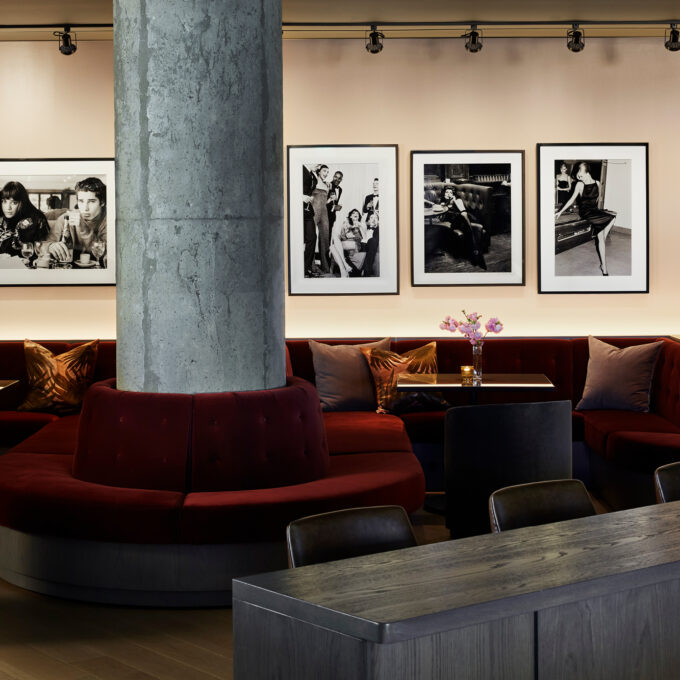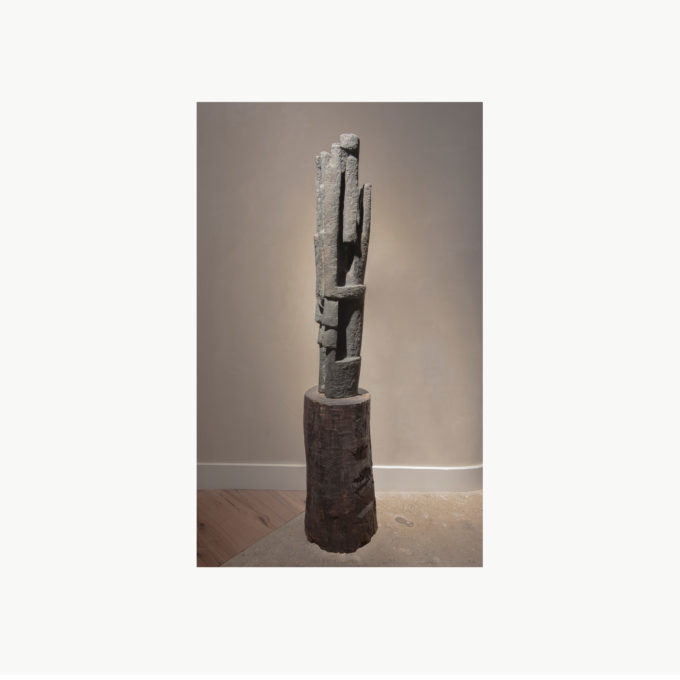





Home to a clientele of travelers and sophisticates that make the globe their home, Fitler Club draws artwork from different continents to its walls. Whether one is looking for frozen moments by a Japanese photographer or pastel sketches by an Australian illustrator, there is a visual feast for every palette. The collection houses works that range from the high concept works of Damien Hirst, the figurative paintings of Alex Katz, and the street-inspired graffiti of some of Philadelphia’s locally-bred favorites. More than a base for business, Fitler Club’s gallery is a bastion of inspiration.
Gordon Cheung, Tulipmania 3, 6, 9, and 11, 2012, Archival inkjet prints with hand painting
Gordon Cheung’s parents emigrated from Hong Kong to London in the late ‘60s, where the artist was born in 1975. He studied painting at Central Saint Martins, and graduated from the Royal College of Art in 2001. He is most known for his Tulipmania series which refers to the world’s first recorded financial crash in 17th C. Holland when the trading of tulip bulbs reached such a speculative frenzy that the price of one flower was ten times the annual income of a skilled worker. In a nod to inclusion of both Cheung’s Chinese and British backgrounds, the art historical heritages of both text and image are combined in the work. Using the financial indexes of British newspapers as background, the artist’s method involves throwing gobs of mixed paint onto sheets to dry before collaging the dried paint shapes onto the stock listings to create his floral forms. The resulting compositions are a poignant commentary on the cyclical nature of history and the absurdities of civilization. Cheung’s work is held in many public collections worldwide including the British Museum, London, Royal College of Art, London, Museum of Contemporary Art, Krakow, Museum of Modern Art, New York, Hirshhorn Museum and Sculpture Garden, Washington DC, and Minneapolis Institute of Art, Minnesota. He has recently taken part in the Karachi Biennale, Pakistan, the Venice Biennale, and the Beijing International Art Biennale, and has had recent solo exhibitions at the Ann Norton Sculpture Gardens, West Palm Beach, FL and the Nottingham Castle Museum, Nottingham UK.
Joe Bradley, 2017, Oil on canvas
Joe Bradley’s art-making practice is focused on process. He places the canvas on the floor of his studio, walking around and occasionally onto the work while making his marks. He paints on both sides of the canvas so not only do colors intentionally stain through from the other sides but there is often debris from the studio floor stuck to the surface. The artist embraces these accidental additions, finding the resulting alterations exciting – like a plot twist. This humble approach, incorporating incidental dust, dirt, and footprints, demonstrates the artist’s lack of ego investment in his practice. Rather than merely expressing himself, he allows the painting to emerge from the environment, through materials, providence, and his intuitive guiding hand. Bradley’s work is included in public collections worldwide, including the Fondation Louis Vuitton, Paris, The George, Economou Collection, Athens, the Museum of Modern Art, New York, and the Whitney Museum of American Art, New York, among others. He has had recent solo exhibitions at MoMA PS1 NY, Rose Art Museum, Waltham MA, Albright-Knox Gallery, Buffalo, NY, and Château de Boisgeloup, Gisors, France.
Alicia Penalba, Untitled, 1954, Bronze and wood
Alicia Penalba was born in 1913 in San Pedro, Buenos Aires and grew up in Valparaiso, Chile. As a teenager she attended art school in Buenos Aires. In 1948 she received a grant from the French government and moved to Paris. In Argentina she had been making paintings, but France proved transformative, and she started making sculpture. Penalba created her Totem series to symbolically depict the source of all creation and the beginning of life itself. All works from this series feature a concave center – a biomorphic abstraction of nature’s protections like the shell of a nut or the nest of a bird. While making these works, Penalba drew inspiration from the vertically soaring architecture of the gothic cathedrals of Europe, and also from the natural environment of her youth – the black rocks at the beach in Chile where she played as a child. She described making the Totem works as a great liberation; her sculptures began “to open up and to fly.”
Penalba participated in Documenta II in Kassel, Germany, in 1959, received the grand prize for sculpture at the 1961 Sao Paolo Biennial, and in 1968 exhibited at the Musee d’Art Moderne de la Ville de Paris with Wilfredo Lam and Roberto Matta. Her work is included in the collections of the Centre Pompidou, Paris; the Hirshhorn Museum and Sculpture Garden, Washington DC; Zentrum Paul Klee, Berne, Switzerland; Museu de Arte Moderna, Rio de Janeiro; Museo de la Solidaridad Salvador Allende, Santiago, Chile, and the Museo Nacional de Bellas Artes, Buenos Aires, among others.
William Kentridge, ‘Birds in Flight’ (from Notes Towards a Model Opera), 2015, Indian ink on paper
William Kentridge was born in 1955 in Johannesburg, South Africa, the son of two prominent anti-apartheid lawyers. He grew up with a high awareness of social and political injustice, and his drawings, prints, sculptures, films, and other artworks are infused with themes of oppression and liberation.
Birds are a recurring motif in Kentridge’s work, employed to both symbolic and technical effect. In his stop-motion animations they illustrate movement as the positions of their wings are altered from drawing to drawing, from frame to frame. Birds depicted in flight are also a universal symbol of freedom; they move between realms of land and sea and air. By titling this series of drawings ‘Birds in Flight’ (from Notes Towards a Model Opera), Kentridge has evoked both the concept of freedom, and a specific time when a country’s creative life was dominated by propaganda and confined by censorship.
Julian Martin, Untitled series, 2016-2017, Pastel on paper
As a teenager in Melbourne, Julian Martin began to participate in the Arts Project Australia studio art program which supports and promotes artists with special needs. Soon he was spending three days a week at ACA’s specialized studio and his work was included in exhibitions nationwide. Martin is now internationally known for his abstract works on paper characterized by bold colors, geometric shapes, and dense, richly pigmented, surfaces. He carefully selects a photograph or an arranged still-life, then, with pigment on paper, methodically distills the specific image into an abstract representation. He does not erase or change his work but rather hand-draws without rehearsal. His source materials range from photos of Hollywood celebrities and sports stars, to kitchen utensils and tools, to letters and logos. Martin was diagnosed with autism at an early age and does not communicate verbally, but his striking geometric compositions speak in a friendly language all their own.
Known as “Outsider Art,” works made by artists with different abilities, special needs, or who received no formal training or education, first attracted notice within the mainstream art world when the German Expressionists and French Surrealists began to look to it for inspiration in the early 20th Century. After WWII, the French artist Jean Dubuffet began to collect and exhibit Outsider Art. He called it Art Brut (Raw Art) and mounted a ground-breaking exhibition in Paris in 1947. From then on, Outsider Art has remained internationally relevant, spawning art fairs, galleries, and collecting museums worldwide. Dubuffet’s Collection de l’art Brut is permanently housed in Lausanne, Switzerland.